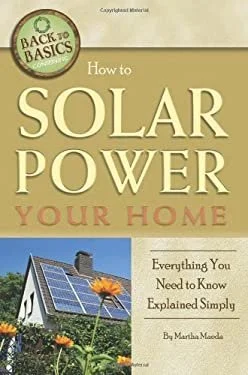Today I applied to the Homeowners Association (HOA) to approve installing solar panels on our home. The process to choose installing solar has been much more challenging, although less expensive, than buying a PHEV car last year as I previously described in this blog. While I’ve bought many automobiles in the past, this is the first time choosing a solar company to purchase and install panels. With the new Inflation Reduction Act allowing for 30% tax rebates and declining costs of solar panels, the time for homeowners to install solar could never be better!
We purchased our home in February 2022. About a dozen neighbors out of a couple of hundred homes have installed solar panels so far. However, the HOA just took over the 5-year old community after the builder completed the development. Our next door neighbor, who needed to signoff on our request, was able to install panels on their rear south facing roof and some homes were “grandfathered” allowing them with panels facing the front of the house. The new HOA requirements do not allow panels to be visible from the front of the house which eliminates many homeowners from installing solar if the front of their home faces the south.
So we may be the first to test the new architectural review committee (ARC) process, which just this month added solar to the guidelines: “Solar Panels are allowed and should be installed by a licensed professional with the proper architectural application approval. Panels should be installed on the sides or back of the roof and not front street facing to appeal more to the overall look of the home.”
We are requesting the ARC to approve our plan for installing 18 panels on the west facing rear roof and 4 panels on the south facing roof. Our neighbor in charge of the ARC informally suggested we get the most efficient and install the fewest number of panels we can.
I spoke with several neighbors who’ve installed solar panels in our neighborhood by knocking on doors or checking the Facebook group learning they used at least four different companies. Before contacting companies I wanted to get better informed on the options so I found this book to be very helpful as an introduction:
How to Solar Power Your Home by Martha Maeda, 2015 Atlantic Publishing Group
The author describes motivations for going solar, active and passive systems, evaluating if solar is right for you depending on where you live, energy efficiency, designs and selecting components, rebates, and maintenance.
After reading the book and reviewing some helpful websites including energysage.com, solarreviews.com, solarpowertalk.com, and nuwattenergy.com, I compiled lists of solar providers, ratings, reviews, manufacturer technology, and costs. I then contacted companies on the top list and got estimates over the phone after providing our monthly electric usage.
I compared bids from six companies that proposed to install panels from several companies including AlphaPure, QCell, REC, Solaria, and SunPower. So it’s important to learn about the actual panel technology in addition to selecting the company to install the panels. Some of the installers were locally owned companies and some were national. I spoke with sales people from several other states and only one person wanted to meet in person. I looked at solar panel specs including efficiency, duration (panels lose power over time), cost per watt, and warrantees. Many of the installation companies were willing to share how they could beat the competition.
The process to select a solar company took me several weeks, it will take several more months to get the panels installed, and we probably won’t know for many years or perhaps decades if we made the right decisions so far. But we can feel good today that we are trying to make a difference in going green!

